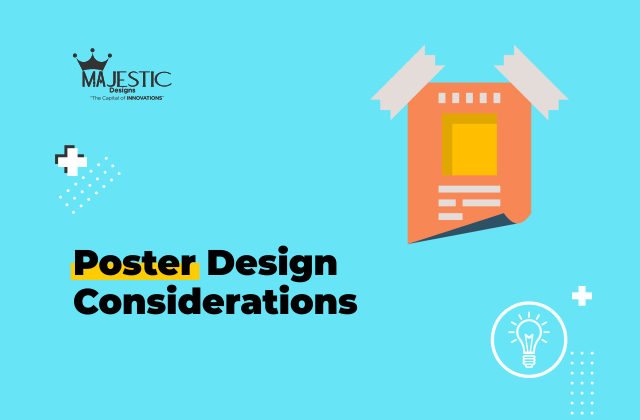The first goal of every poster is to grab the attention of passersby and immediately communicate the intended message. With our world becoming increasingly cluttered with lights, signs, billboards, and flyers, creating dynamic posters that stand out among the visual noise and connect with viewers is increasingly difficult. Because of this, a strong visual concept that requires little if any text to communicate and a clear hierarchy are paramount.

Poster Design Considerations:
Size
Large posters are more effective at grabbing viewer attention. The only restrictions are where the poster will be displayed, the size of the printing press, and the client’s budget.
Color
Posters utilizing bright, vibrant colors tend to pop off a surface unless they are hung in a sea of equally vibrant works. In this case, a one- or two-color piece can be just as, if not more, effective.
Typography
In a world where viewers are over-stimulated by graphic images and messages, a poster utilizing simple typography will stand out and convey its information most efficiently. Depending on the characteristics of a selected font, typography has the ability to convey emotional and expressive qualities. Sans serif fonts are very direct and authoritative looking, while serif and italic types are friendlier and more approachable.
Imagery
Simple and direct visuals attract the viewer’s attention and compel them to read presented information. Generally speaking, images should dominate the composition unless a typographic solution is used.
Physical location
When designing a poster, take into consideration where the poster will be hung. Will it be inside a building, well lit, among numerous other posters on a busy thoroughfare, or will it be folded and sent in the mail? Determine if your viewers will have time to stop and observe the poster, in which case you can afford to create a more intricate work; or if you need to catch their eyes and communicate the message in a few seconds with a bold and simplistic composition. Every scenario will require a different design strategy for success.

